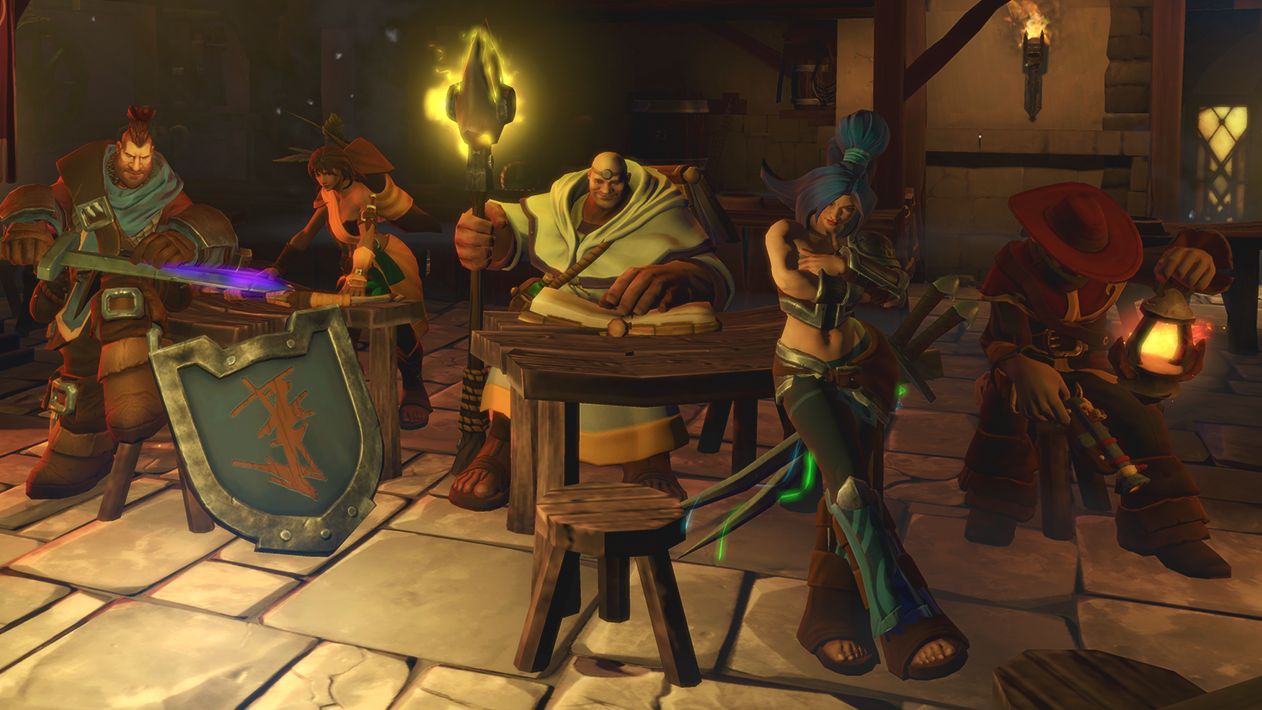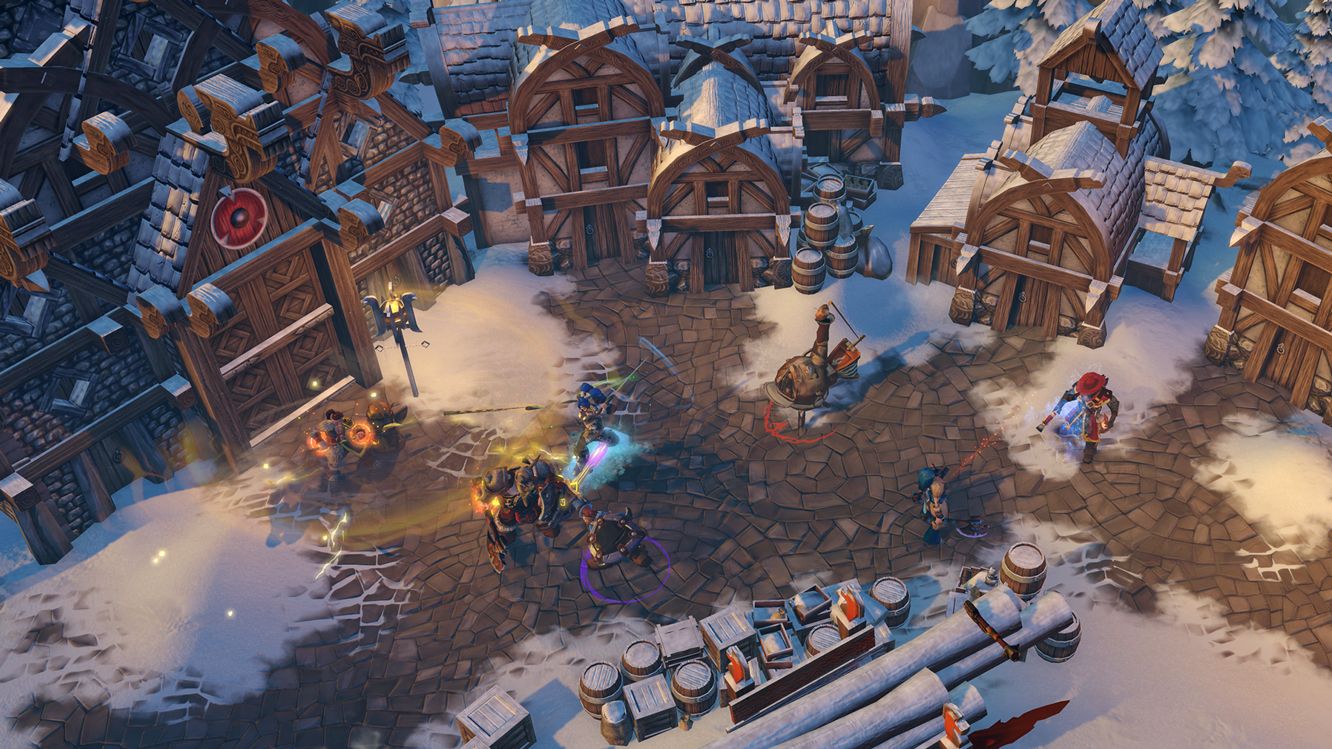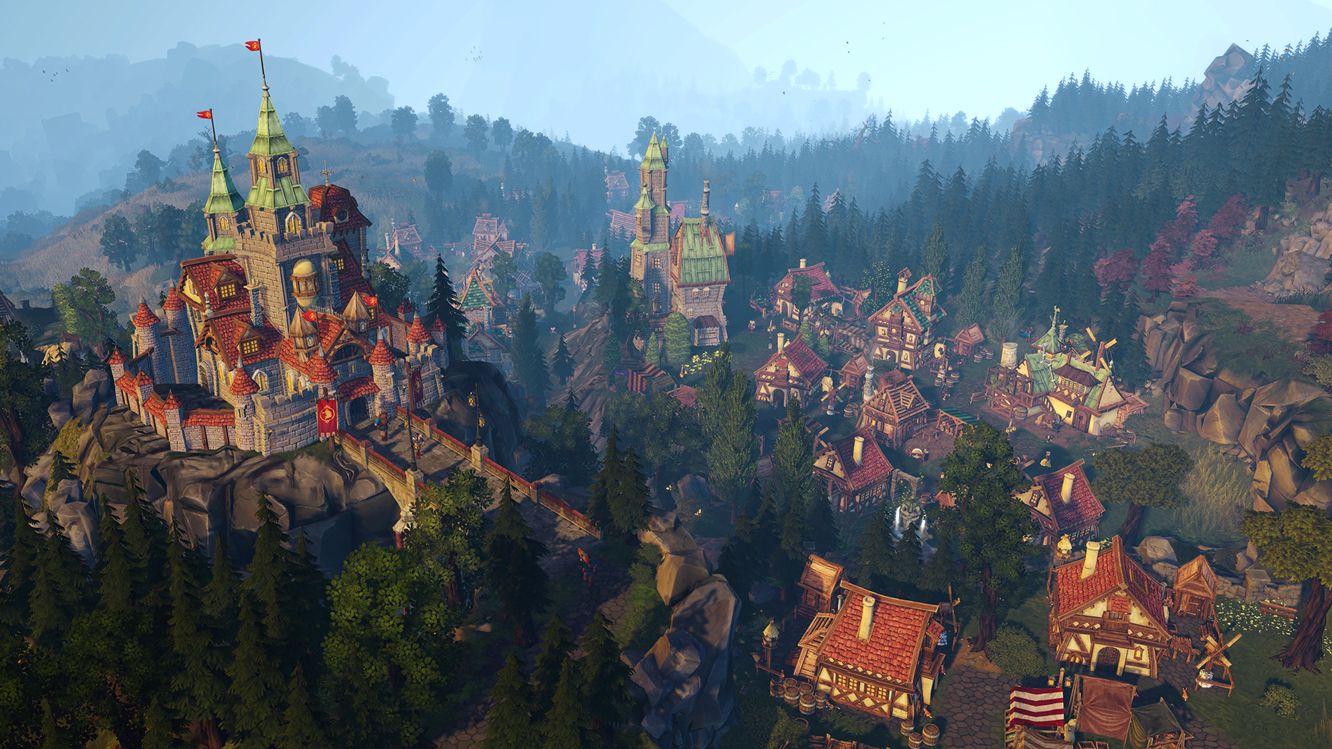Champions of Anteria: the action RPG with a clever non-linear campaign
Emerging from the ashes of an unfinished Settlers game.

In late 2014, the new Settlers game was mauled in public beta. Mihnea Dragoman remembers the negative feedback and describes how they redesigned the game completely to fix it, almost stripping out the city building altogether. “We took a step back and realised that it was no longer a Settlers experience,” he says “There was no point in tricking the players by calling it that.” The Settlers: Kingdoms of Anteria was no more, and Champions of Anteria was born.
Dragoman is the game’s Creative Director. He’s showing me the revamped title today, as well as giving me a couple of hours to play it myself. The game looks straightforward—an action RPG where you control cartoony heroes—but is in fact one of those cross-genre titles that’s hard to pin down.
The plot, at least, is by the book; the land of Anteria is overrun by bandits and hostile tribes. Champions of Anteria follows its eponymous wandering Champions as they reconquer lost territory and rebuild the land. The story tries very hard to be funny, and is narrated by Brian, a shrimpish loudmouth trapped in a magic set of stocks by the Big Bad. “There’s one big story-arc... And there’s a small story arc for each of the factions,” says Dragoman.
Cartoony tableaus fill out the cutscenes, though oddly no-one’s lips move—disconcerting as hell when Brian is monologuing straight to the screen. They at least fit with the wider look, which is pure Blizzard. From the bright colours, to the chunky characters, to the old-fashioned isometric RTS perspective, this looks a lot like Warcraft.

The innovation comes, though, in Champions of Anteria’s turn-based, non-linear campaign (reminiscent of Dungeon Keeper or Rise of Nations 2) that takes place over a large map. Here, every day (turn) you can choose to attack any single territory neighbouring one of your own. Alternatively, sometimes one of the three enemy factions will attack one of your territories, meaning you’ll need to defend it instead. At any time, there might be five or six territories where you can advance and the enemy factions could be advancing too.
Tied into this, there’s a small town-building metagame at your capital, which is the nearest it gets to Settlers games of yore. You can unlock districts with different specialities that house a small number of buildings. Each building also reinforces or interferes with other buildings in the neighbourhood, making expansion feel like a small puzzle game. Each building also produces resources, which you feed into gadgets, equipment and potions for the heroes. So a quarry might produce the metal resource, but will produce less if there’s another quarry in the same district.
Once you’ve chosen your mission for the day, you get a small briefing screen, where you select your heroes, pick out four powers from any you’ve unlocked, and choose up to four item stacks to take in with you. The three starting heroes are pretty traditional roleplay types—a monk, a knight, an archer—and you unlock two more very early in the campaign.
The biggest gaming news, reviews and hardware deals
Keep up to date with the most important stories and the best deals, as picked by the PC Gamer team.
On this screen, you also get a preview of how the enemies’ ‘elements’ stack up in this mission. This is crucial, because each hero has an affinity too, as do all their attacks, and the five elements (water, fire, metal, nature and lightning) are arranged in a wheel, with each element being weak to the one counter-clockwise and strong against the one clockwise. So before a mission, you’re balancing the heroes’ abilities against their place on this wheel.

Moreover, without that elements wheel, there would be no reason for the ability to pause combat to queue up movement and attacks. This would just be a MMO-y RPG. With the element wheel, you have to consider each attack carefully. If my lightning-element priest uses his special orb attack, it’ll do minimal damage but shift this metal enemy’s affinity to lightning too. That’ll protect the priest from the enemy, but how will it affect my other two characters? If one of them is nature-based, then it exposes them to the enemy’s critical attacks. And that’s just one enemy, where skirmishes can involve several of them, all with different affinities, chosen from over 200 different types. You have to pause, all the time, because getting it wrong means a character losing health fast—and even dying (just for the mission). “We’re allowing players to be more thinky, not relying on reflexes.” says Dragoman.
It matters because Anteria, behind all that Warcraft shine, is a resource management game. You start each randomised map with a tightly limited amount of health for each hero and a handful of gadgets and potions if you could afford them. Unless you’re good or determined to complete the secondary objectives for bonus meta-game resources, the enemies are so tough to kill that it’s best focusing on your objective and avoiding combat wherever possible.
That resource control extends throughout the combat. From avoiding the MMO-style directional mega-attacks, to juggling each hero’s individual special power mechanics, “it’s all about optimisation,” as Dragoman says. For example, Anslem, the monk, needs to perform normal attacks to build up power for his special attacks; meanwhile, Nusala, the archer, builds up arrows on a target, before using them up in other abilities.
Champions of Anteria is shaping up nicely. The look, the difficulty and the non-linear campaign are welcome steps away from the norm. And the elements wheel is one of those smart innovations that could rejuvenate what could otherwise have been a slightly shiny RPG. And sensibly, given its lack of multiplayer, it’s being released at a reasonable £25/$30, giving Champions of Anteria a better shot at finding the audience it’s looking for.

